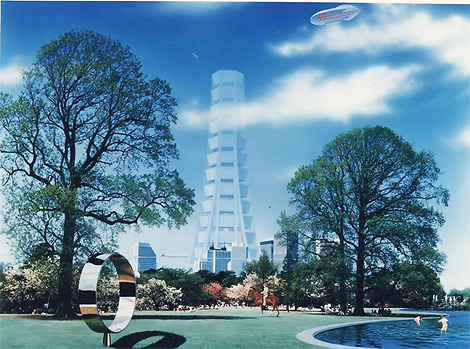All it takes is one BIG idea. That’s how the world’s most iconic projects got their start. While we continue our focus on the BIG projects of the world, we wanted to share some projects that caught our attention. One is already a modern engineering marvel, one may be the future of how we travel, and one may be the future of where we work and live. Some of the BIG ideas are still on the drawing board while others are actually being constructed. All of them are exciting to watch.
Moving world trade into the future
It’s a place where two sides of the world connect. Without it, world trade would be unable to function as it does today. The 48 mile-long Panama Canal was created to allow the world’s ships to pass between the Atlantic and Pacific Oceans and avoid the lengthier and much more dangerous journey around South America’s tip, Cape Horn. Approaching its 100 birthday, the Panama Canal is nearing completion of a massive facelift. Improvements to one of the most integral parts of the world economy will include the construction of two new locks with three chambers each helping to double its current capacity. The Panama Canal Expansion Program will also include the widening and deepening of existing navigational channels in the artificial Gatun Lake and the Culebra Cut to facilitate more efficient travel for the world’s largest shipping vessels.
In 2006, Panama’s then President Martín Torrijos, pitched the expansion as a way to make Panama a first-world country. More than 75 percent of Panamanians approved of the plan in a national referendum. As with most mega projects, the Panama Canal Expansion Program had its fair share of critics. Opponents include former Panamanian Presidents Jorge Illueca and Guillermo Endara, much of the Panamanian labor movement, and some of the country’s environmental leaders and groups including Biodiversidad Panama. Some opponents believe the expansion is not necessary and a new mega-port on the Pacific side would suffice. For now, the expansion program is on track for completion in 2014 or 2015, but coming up close on its heels are early plans for a new canal with even greater capacity in Nicaragua.
Faster than a speeding bullet
What if you could travel from Los Angeles to San Francisco in the time it takes to watch a sitcom? That is what entrepreneur and Tesla Motors CEO Elon Musk’s vision for the future of travel includes. Earlier this summer, Musk unveiled plans for the Hyperloop a project that would provide giant vacuum-like tubes and an air-bearing suspension system that would allow riders to make the roughly 350-mile trip in just 30 minutes.
Musk’s idea for the Hyperloop was spawned by the billion dollar plans for a high-speed rail system between Sacramento and San Diego. While the California high-speed trains would be capable of traveling more than 200 miles per hour, Musk believes his Hyperloop transport system could allow for travel six times faster at one-tenth of the cost, with an estimated price tag of $70 billion. This may sound like a dream come true for the residents of our country’s most populous state, who all too often find themselves sitting bumper to bumper on the Interstate. For now, the Hyperloop is the dream of Musk, and 1,000 of his employees from his electric car company Tesla Motors and space exploration company, Space X. But we’ll never say never to a big idea coming from the man who revolutionized e-commerce when he co-founded PayPal and has booked more than 50 cargo and commercial satellite flights to space through 2017 with Space X.
Onward and Upward
Looking for a new place to live? Maybe you are looking for a place with a view? That is one thing you will definitely get with SKY CITY 1000.
Planned for Tokyo, the design for this mixed-use super-high rise was first proposed in 1989 by Japanese architecture and engineering firm Takenaka Corporation. SKY CITY 1000 was conceptualized to help reduce overcrowding in urban areas. At 3,280.84 feet high (the equivalent of 328 stories) SKY CITY 1000’s fourteen “Space Plateaus” stacked one on top of the other could house 35,000 people and provide office, commercial, education, entertainment, and other space to employ 100,000 people. Each Space Plateau will act as its own town and even be equipped with its own train. If built it would become the tallest man made structure in the world. While this project may sound like something out of a sci-fi novel, a Tokyo Fire Department helicopter has been used in test simulations to see what the danger would be if a fire were to start in a building of this height and triple-decker high-speed elevators are being designed in labs outside of Tokyo. So you could say the future is looking up.
– – –
We encourage you to think BIG and stay with us as we continue to explore BIG projects through the end of the month.
Liz Faris, Account Manager
Collaborative Services, Inc.





Recent Comments